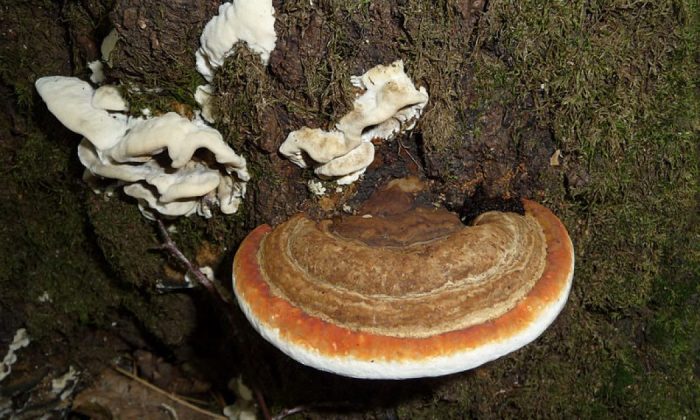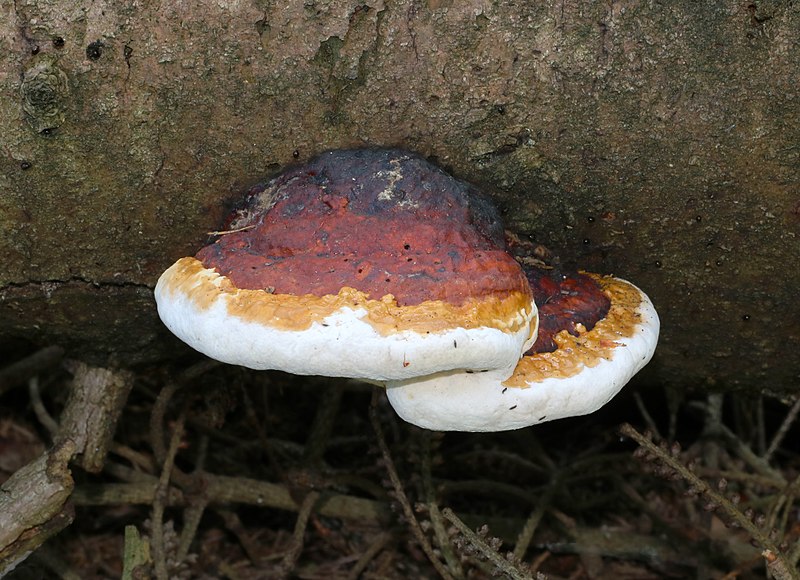Red-belted conk and its effects on our health

Red-belted conk (Fomitopsis piniola) is a fungus that grows on trees. It is attached to bark and grows alone or in a roof-tile arrangement one above the other one. The pileus is usually 5 to 25 cm in size, and the height ranges from 5 to 12 cm. The surface of the mushroom is relatively hard and uneven, with concentric bands separated by grooves. The surface colour is matte but it becomes shiny towards the edges.
What does the red-belted conk look like?
It is usually yellowish to orange around the edge but it gets reddish brown to a dark brown towards the centre. The older part of the mushroom (the oldest part of the mushroom is attached to the tree) is gray to black (or brown to black). Edges are usually dewy and slippery . The flesh is ochre and is relatively hard. You can find it all year round on tree trunks and branches (dead deciduous and coniferous trees).
Photo: Commons.wikimedia.org
How to use a red-belted conk
You cannot use this mushroom directly in the kitchen, but do not give up on it. It is not a useless mushroom as it contains many healthy substances which are usually isolated through industrial processing. Well, it is not a mushroom that is on our mushroom picking list, but it does have its uses. Do not confuse the red-belted conk with its relative Fomes fomentarius, which is inedible – the pileus is usually gray not brown.
Medicinal effects
This mushroom is said to have the ability to fight cancer. It is also used as a homeopathic medicine against nausea and vomiting, stomach problems, constipation, fever and headache. Another benefit is that it strengthens our immune system. To do so, take the daily recommended amount (40 to 60 g per day in two doses). You can also use the mushroom twice a day (20 to 30 g) in a soup or tea. To do so, cut the mushroom into thin slices and soak them in boiling water an hour before use.
Preview photo: Commons.wikimedia.org

Gardening is my hobby, I have a lot of experience and I am happy to share it.









0 comments